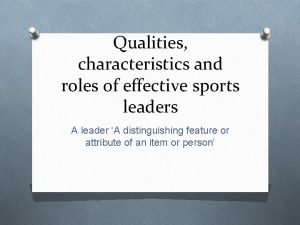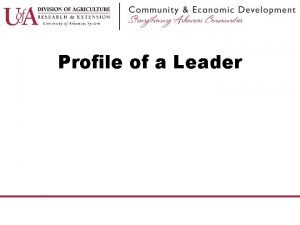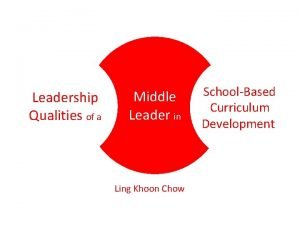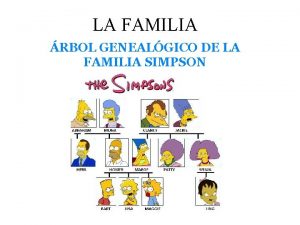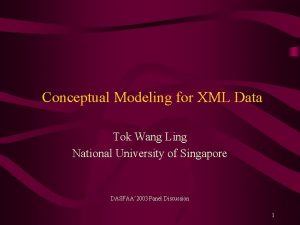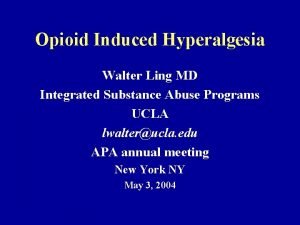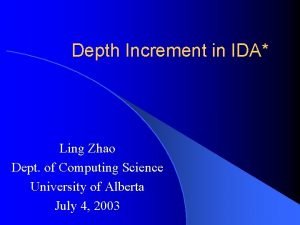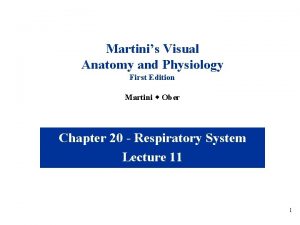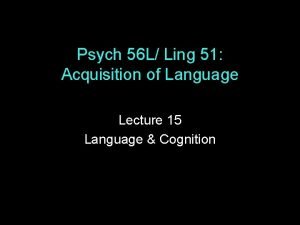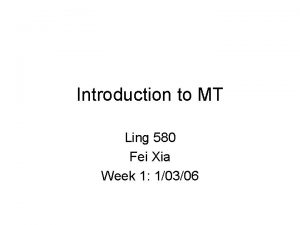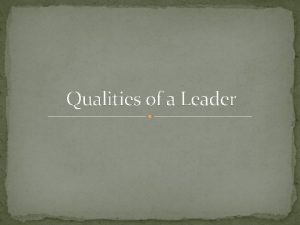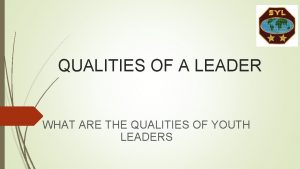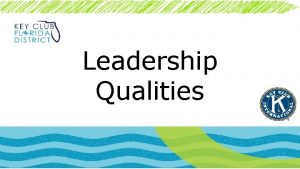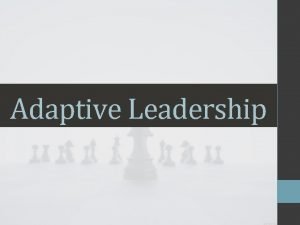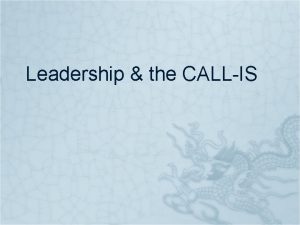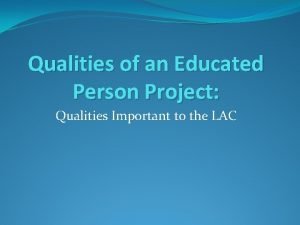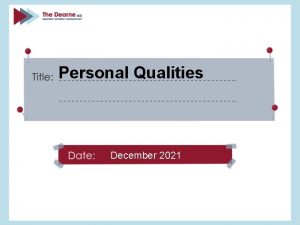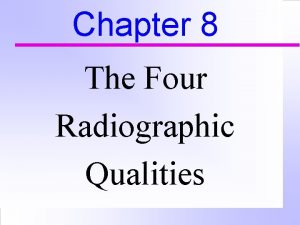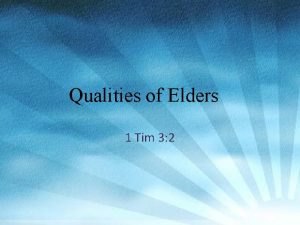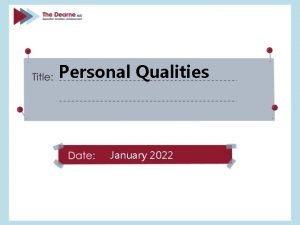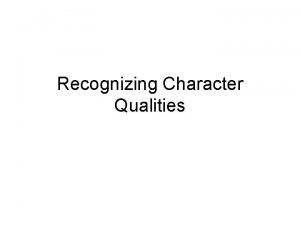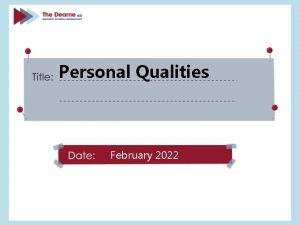Leadership Qualities of a Middle Leader in Ling






























- Slides: 30

Leadership Qualities of a Middle Leader in Ling Khoon Chow School-Based Curriculum Development

Introduction Aim of Study Scope of Presentation Research Method Setting of Case Findings Discussion Conclusion

Introduction School based curriculum development (SBCD) to improve educational outcomes - A form of decentralization of curriculum decision making to meet diverse needs of students - Greater teacher ownership of curriculum, professional development

Challenges to SBCD Introduction - Implementation issues - Changing the culture in a school and support for the change in school - Teacher capacity and capability - Leadership in change process - Sustainability and staff mobility

Introduction Leadership is important

Middle leaders are responsible for the introduction, planning, implementation and evaluation of SBCD Introduction - Roles related to middle management and subject leadership - S’pore context - HODs/SHs - Forefront of leading learning and improving student outcomes - Leadership qualities of middle leaders play important factor in success of school improvement efforts

- - Educational Change - political and paradoxical process cannot be achieved by a step-by-step, linear process More factors supporting implementation, more likely change will be successful (Fullan, 2001)

Need Clarity Educational Change Fullan Principal Conceptual Frame of Change Teachers Organizational Culture

Aim of Study To study the leadership qualities of a middle leader when leading school-based curriculum development in a secondary school in Singapore

Reseach Questions What is the purpose of SBCD from the perspective of a middle leader, teacher and school leader?

Reseach Questions What are some leadership behaviors of the middle leader that have led to the success of the SBCD?

Exploratory case study approach - Middle leader who led a SBCD in a secondary school Semi-structured interviews (Triangulation) Research Method - Middle leader in charge of programme - Teachers involved in programme - Principal of school Interviews focused on - Purpose of SBCD - Actions of middle leader before, during and after SBCD Analysis of interviews - Transcribed, sent back to interviewees for verification - Analysed using a thematic analysis framework - Constant comparison method (Corbin and Strauss, 2008)

Action School Setting of Case - Typical school with 3 streams, Exp, NA, NT - Recognized as high performing school - Won MOE awards for innovative culture

Middle leader Setting of Case - Jane, Design & Technology (D&T) teacher - Middle leader four years - Reputation of being innovative and task-oriented

Sec 3 (NT) Holistic programme Setting of Case - Inter-disciplinary project involves D&T, Elements of Business Skills, English, Physical Education, Mother Tongue, Community Involvement Programme,

Findings Purpose of SBCD Common beliefs between teachers, middle leader and principal - SBCD should meet students’ needs - Enhance student learning experience

Select teachers who shared the vision of wanting to do something to meet the needs of the NT students - Findings Purpose of SBCD - Similar beliefs of teachers, help to accept change easier “the right people were on the team…. a group of people who were interested in the project and did not need monitoring…. I believe that if you want to try something new, you want it to succeed, and you will want to select the right people” (Principal) The first year, the people you pick has to be strong and believe in it…because first year, is the one you have a lot of obstacles, and it is unknown” (Jane)

Planner Findings Leadership qualities In Jane - “She is meticulous and plans everything very clearly” (Teacher) - “her ability to plan, not just for students, but also for the teachers, when the teachers need to do what. And her discipline to carry out her plans” (Principal) - Anticipate issues - Seek out partnership that could help in the project - Flexible in approach

Empowerment of teachers Findings Leadership qualities In Jane - In-depth knowledge of individuals, get teachers to act according to their personalities and strengths - Get team to develop tasks with a sense of ownership and achievement, creates a strong motivation for teachers to put in their effort and contribution (Leithwood and Beatty, 2008)

Role modelling Findings Leadership qualities In Jane - “When you lead by doing, it is easier” (Jane) - “She will take the lead in doing a lot of things, she was very handson…. she worked with them, along the way” (Teacher)

Findings Leadership qualities In Jane Fostering collegiality and collaboration - Good communication, harmonious working relationship - Teachers appreciated that someone cared - Interpersonal skills

Findings Leadership qualities In Jane Sustainability - Planning for others to take over - “sustaining the programme itself, she has groomed a second IC to take over…. so I think she has these processes in place, to ensure that there is a handover” (Principal)

Findings School and Organization Culture Open culture - encouraged initiatives by teacher

Findings School and Organization Culture No-blame culture - “Generally, people are quite receptive to new things, so it is quite open” (Jane) - “Open culture, meaning we share very easily, there is no holding back, no hidden agenda” (Teacher)

Teacher selection - Shared vision Need for clear vision, target teachers’ beliefs Alignment with school goals (Clarity) Discussion Relationship building - Schools cannot achieve change by brute sanity (Fullan, 2007) Care for teachers, building on teachers’ strengths - Increase level of enthusiasm, reduce frustration, transmit sense of mission, indirectly increase performance (Mc. Coll-Kennedy & Anderson, 2002)

Distributed leadership - Shared leadership with team, take more responsibility in decision making in areas of strength People oriented leadership Discussion - Discuss individual concerns explicitly. Strengthen shared understandings (Beatty, 2002) Organizational Culture matters - Open culture of management and collegiality among staff as catalysts for innovation

Limitations And Further Work - Single case study approach, use of only interviews - Precludes any comparison between middle leaders in different contexts Further Work - Research could be expanded with more cases within different school contexts and teacher backgrounds - Longitudinal studies and shadowing to enhance the breadth and depth of the data collected

Implications - Professional development for middle leaders - Vision and mission building - Leadership skills - Coaching and mentoring, informal learning at workplace

Role of a middle leader in school based curriculum development is complex and challenging. - Conclusion Consistent with previous studies (Lee and Dimmock, 1999) Unless middle leaders are committed to make SBCD a priority, the potential of teachers to contribute to any curriculum change will not be realized The central problem is not just strategy or structure, it is about changing the behaviour of people. (Fullan, 2007) - Reculturing teachers, changing their beliefs and habits

Thank you Questions And Comments
 7 qualities of a christian leader
7 qualities of a christian leader Seven qualities of a good leader
Seven qualities of a good leader Student leadership qualities
Student leadership qualities Quality of a lasallian leader
Quality of a lasallian leader Qualities of a good sports leader
Qualities of a good sports leader Ron mc slide
Ron mc slide Transactional leadership
Transactional leadership Nehemiah leadership qualities
Nehemiah leadership qualities Nehemiah leadership qualities
Nehemiah leadership qualities Howard schultz transactional leadership
Howard schultz transactional leadership Ged fitzgerald
Ged fitzgerald Anastasios angelopulos
Anastasios angelopulos Howard schultz leadership style
Howard schultz leadership style Ma huateng leadership traits
Ma huateng leadership traits Leadership styles of jack ma
Leadership styles of jack ma Nurturing leadership qualities
Nurturing leadership qualities Joshua leadership qualities
Joshua leadership qualities William the conqueror leadership qualities
William the conqueror leadership qualities Leadership definition
Leadership definition Middle leader
Middle leader Ling
Ling Madre de bart, lisa y maggie
Madre de bart, lisa y maggie Ling 200
Ling 200 Wang ling relationship
Wang ling relationship Walter ling
Walter ling Erin ling
Erin ling Ida ling
Ida ling Tree in lung tissue
Tree in lung tissue Language
Language Mt ling
Mt ling Dr ng li ling
Dr ng li ling




